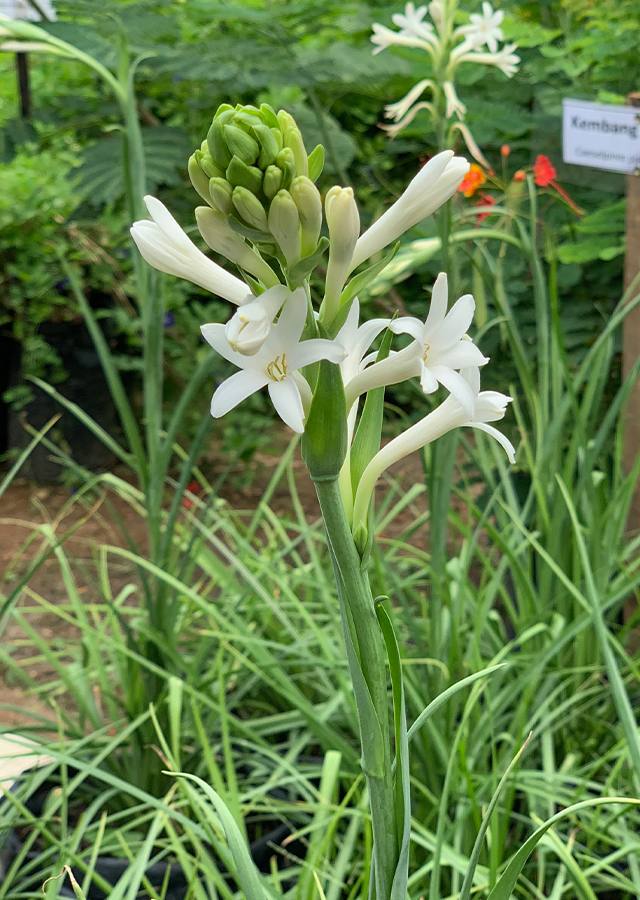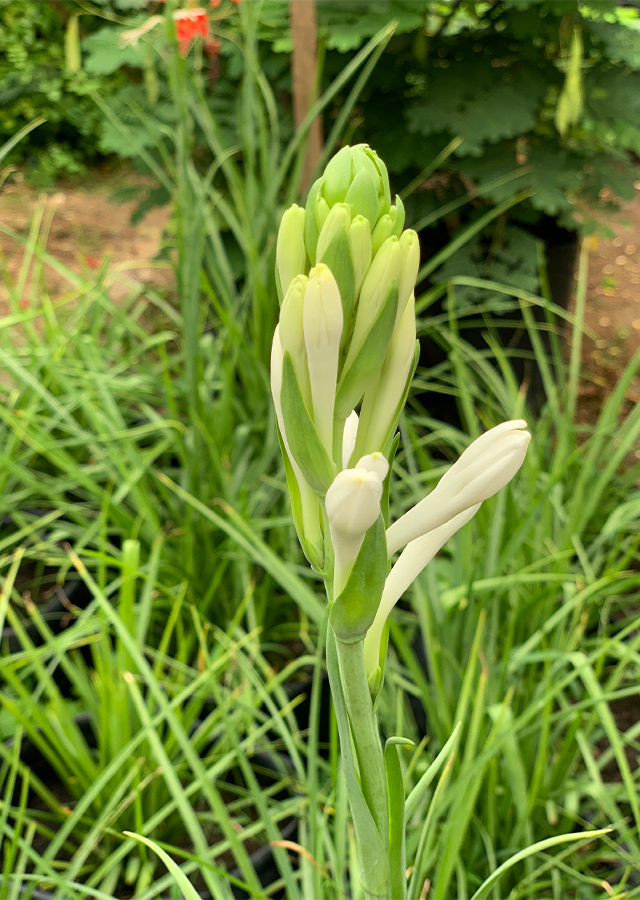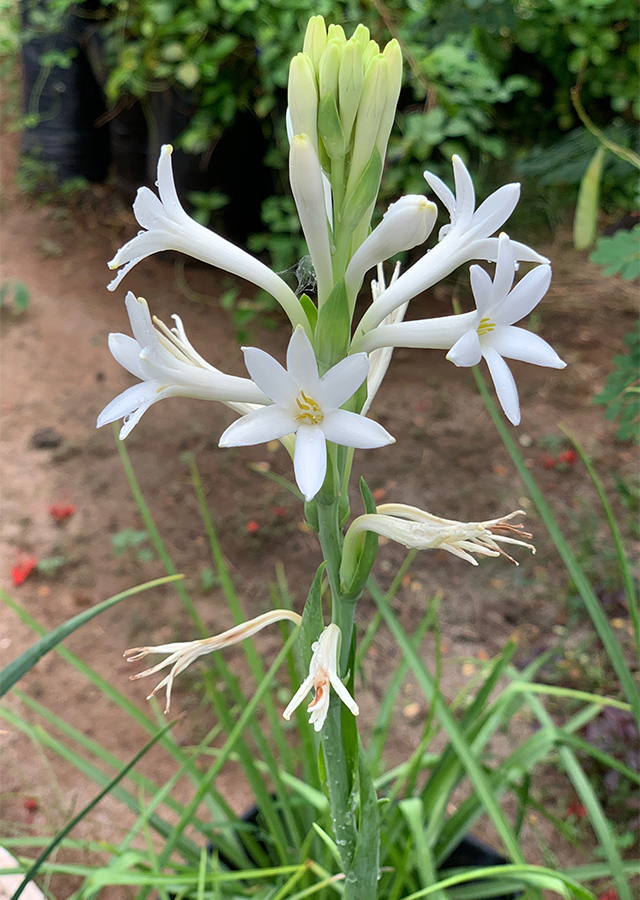Tuberose
Agave amica (Medik.) Thiede & Govaerts
Asparagaceae
Location in our garden
Principal



Synonym
Crinum angustifolium Houtt.
Agave polianthes Thiede & Eggli
Agave tuberosa (L.) Thiede & Eggli
Habitus
Herbaceous. A hardy, evergreen, perennial, erect herbaceous, grows up to 45 - 70 cm tall. This species is native to Central, Southeast, and Southwest Mexico.
Part Used
Leaves
Flowers
Tuber
Growing Requirements
Full Sunshine
Habitat
Terrestrial
Overview
Tuberose is a night blooming plant which is inherent to Mexico. The common name derives from the Latin tuberosa through French tubéreuse, meaning swollenor tuberous in reference to its root system. The plant has been cultivated for centuries in warm temperate to tropical climates, both as an ornamental plant and for the essential oil obtained from the flowers.
Vernacular Names
Wan xiangyu (Chinese), Jacinthe des Indes (French), Nachthyazinthe (German), Rajnigandha (India), Harum sundal malam (Malay), Azucena (Philippines).
Agroecology
Tuberose grows best in mild climate without extremes of high or low temperatures, 20–32 °C, sensitive to low temperatures and frost. High temperatures close to 40 °C reduces flower spike length and quality. Tuberose prefers a sunny position. Although it can growing a wide range of soils including saline and alkaline soils, it prefers well-drained and aerated sandy loams rich in organic matter with pH of 6–7.5. It requires copious watering during the growth stage.
Morphology
- Roots - fleshy and tuberous.
- Stem - erect leafy, segmented, bulbous.
- Leaves - elongated linear and bright green which is clustered at the base of the plant.
- Flowers - fragrant, simple measuring 45 cm and is unbranched terminal racemous spike having 4 to 6 waxy white flowers that form in pairs, up to 3.92 cm diam. The perianth is funnel-shaped or tubular with short subequal and curved oblong to lanceolate tepals and 10 to 15 mm long, up to 30 flowers per stem.
- Fruit - Capsule shape.
Cultivation
Propagated through tuber/bulb division.
Chemical Constituents
Flavonoids, polyphenols, steroid sapogenins, alkaloid (lycorine), spirostanol saponins,saponins, monosaccharides, glycosides, along-chain alcohol, steroid glycosides(spirostanols and furostanols), methylbenzoate, benzyl benzoate, pentacosane, tuberolactone, tuberose oil (geraniol, indole,methyl anthranilate).
Traditional Medicinal Uses
- Geraniol (tuberose oil) and kaempferol (flavonoid) from the plant may prove to be important components of the plant with therapeutic potential, the first against cancer and the second against both cancer and inflammatory diseases.
- Helps to prevent the chances of anemia, helpful for treating and lowering cataract symptoms.
- In Chinese folk medicine, the tubers are used for the treatment of acute infectious diseases and pyrogenic inflammations, burns, and swellings. The tubers are also considered emetic antispasmodic and diuretic.
- The tubers are dried, powdered, and used as a remedy for gonorrhea and used with turmeric for curing rashes in infants and wound healing (in India) and also used to calm spasms and treat malaria (in Cambodia, Laos, and Vietnam).
- The poultice of the tubers is used as a maturative in the formation of pus in boils or abscesses.
- In India, flowers are used as diuretics and emetics.
- In aromatherapy, the warm and seductive scent of the tuberose oil is useful as a hypnotic for women suffering from insomnia and depression.
- Insect repellent.
Part Used
Reference Sources
- Anonymous. (2008). Standar operasional prosedur budidaya bunga potong sedap malam (Polianthes tuberosa L.). Direktorat Budidaya Tanaman Hias, Direktorat Jenderal Hortikultura, Departemen Pertanian.
- Luthfia, F.I. (2018). Efektivitas ekstrak bunga sedap malam (Polianthes tuberosa L.) sebagai anti nyamuk elektrik terhadap Aedes aegypti. Undergraduate Thesis. Jurusan Analis Kesehatan, Politeknik Kesehatan Kemenkes Surabaya, Surabaya.
- Zuhrah, A., Aini, N., and Wardiyati, T. (2010). Respon morfologi tanaman sedap malam (Polianthes tuberosa L.) terhadap pemberian colchicine. Buana Sains 10(2): 153-158.


